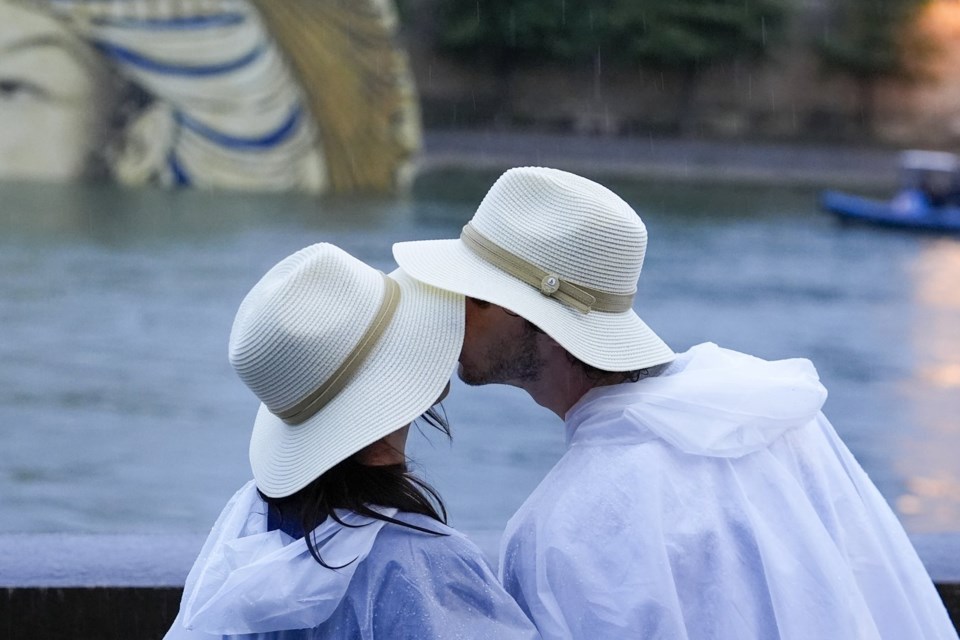After 13 years of marriage, Bethany Meola acknowledges she and her husband can get mired in the midlife chaos that comes with navigating careers and raising three children.
That’s why the six-second kiss felt so good.
A daily intimacy exercise pioneered by couples therapists and clinical psychologists John and Julie Gottman, the six-second kiss is what it sounds like — taking a few moments out of each day to connect physically with your partner.
“It’s kind of a funny thing to put on the to-do list,” said Meola, who first learned of the Gottmans’ work while studying for a theology master’s degree focused on marriage and family.
Even when it felt a little silly, it made a difference.
“It’s long enough to kind of ground you and say, ‘Here’s this other person that I love that I’ve committed to,’ and you’re resting in their presence in kind of a renewed way,” said Meola, co-founder of the nonprofit Life-Giving Wounds in Bowie, Maryland, which aims to help adult children of divorced or separated couples.
Why does six seconds matter?
Six seconds is not an arbitrary number, John Gottman said during a joint video interview with his wife and collaborator. The couple married in 1987 and co-founded the Gottman Institute, which trains couples therapists.
After studying more than 3,000 couples over 30 years, the Gottmans found that six seconds of intentional intimacy is enough to trigger the release of oxytocin. It’s the same hormone that's widely believed to be responsible for bonding a baby with its mother; the Gottmans say it builds trust in a relationship by calming down the fear center of the brain.
Gottman cited research by neuroeconomist Paul Zak that suggests a 20-second hug does the same.
“It comes whenever mammals cuddle with one another,” said Gottman, author of “The Seven Principles for Making Marriage Work” and other books. “For the 20-second hug or the six-second kiss, it’s one that really feels different. It feels like you’ve come home.”
What kind of couple does this work for?
Julie Gottman said an elongated kiss works best for couples who are committed to each other and have built a level of trust. Couples who are in distress and working through issues in therapy might not be ready for it.
“We’re certainly not going to give that information to a very distressed couple early on before significant changes,” she said. “Because it won’t feel authentic if there’s still a lot of distrust.”
How to start
Couples have to decide to take time out of their day to prioritize their relationship. One partner might open the discussion by saying they believe the exercise could deepen their bonding, and why not try it out?
Then it’s best to create a ritual. Set aside the same moment every day, for instance when everyone is about to leave for work and school or just before bedtime.
Creating a ritual of connection during these transitional moments guards against “the managerial relationship, where the only thing a couple does together is adding to their very long list of tasks,” John Gottman said. “We want to really nurture the romance.”
Rituals also foster a shared sense of purpose, Julie Gottman said. Just be sure to savor it, rather than making it a thing you’re supposed to do.
And to the couples who say they can’t find the time? She didn’t mince words.
“You really don’t have six seconds?” she said with a laugh. “You know, we’re not talking six hours here. We’re talking six seconds. So, tell me more about what that block is about. Is there something else going on?”
EDITOR’S NOTE: Albert Stumm writes about food, travel and wellness. Find his work at https://www.albertstumm.com
Albert Stumm, The Associated Press




